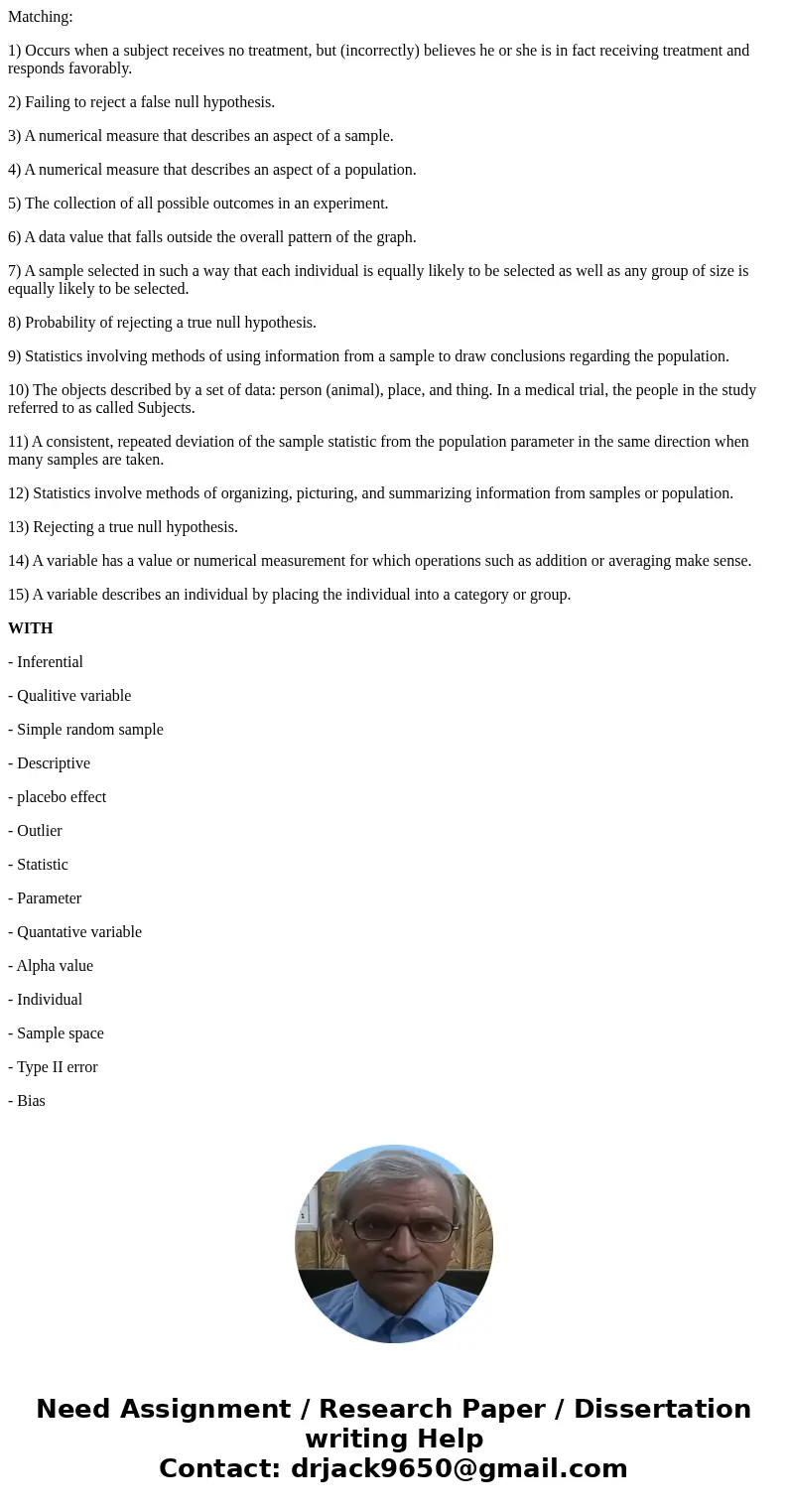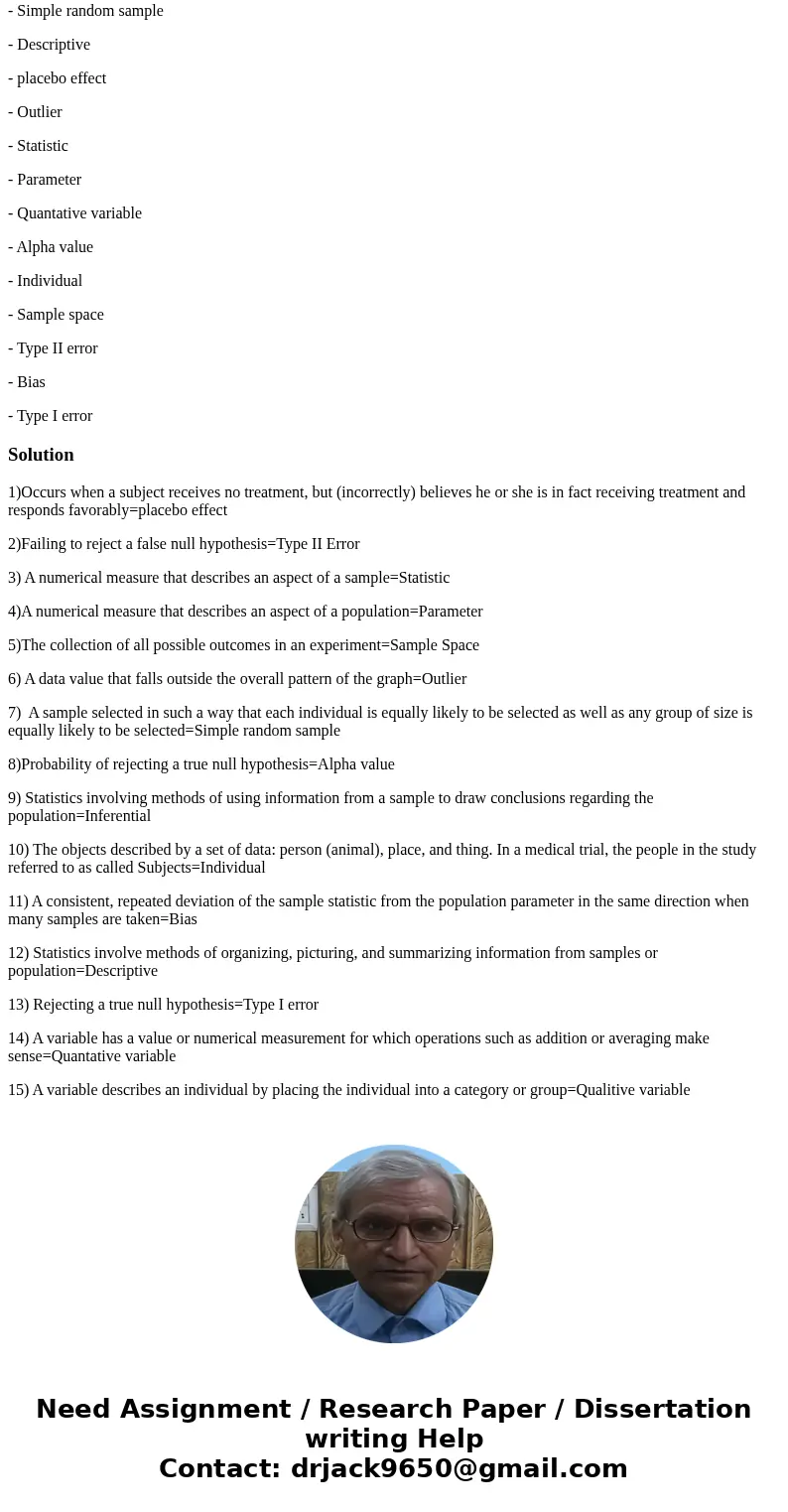Matching 1 Occurs when a subject receives no treatment but i
Matching:
1) Occurs when a subject receives no treatment, but (incorrectly) believes he or she is in fact receiving treatment and responds favorably.
2) Failing to reject a false null hypothesis.
3) A numerical measure that describes an aspect of a sample.
4) A numerical measure that describes an aspect of a population.
5) The collection of all possible outcomes in an experiment.
6) A data value that falls outside the overall pattern of the graph.
7) A sample selected in such a way that each individual is equally likely to be selected as well as any group of size is equally likely to be selected.
8) Probability of rejecting a true null hypothesis.
9) Statistics involving methods of using information from a sample to draw conclusions regarding the population.
10) The objects described by a set of data: person (animal), place, and thing. In a medical trial, the people in the study referred to as called Subjects.
11) A consistent, repeated deviation of the sample statistic from the population parameter in the same direction when many samples are taken.
12) Statistics involve methods of organizing, picturing, and summarizing information from samples or population.
13) Rejecting a true null hypothesis.
14) A variable has a value or numerical measurement for which operations such as addition or averaging make sense.
15) A variable describes an individual by placing the individual into a category or group.
WITH
- Inferential
- Qualitive variable
- Simple random sample
- Descriptive
- placebo effect
- Outlier
- Statistic
- Parameter
- Quantative variable
- Alpha value
- Individual
- Sample space
- Type II error
- Bias
- Type I error
Solution
1)Occurs when a subject receives no treatment, but (incorrectly) believes he or she is in fact receiving treatment and responds favorably=placebo effect
2)Failing to reject a false null hypothesis=Type II Error
3) A numerical measure that describes an aspect of a sample=Statistic
4)A numerical measure that describes an aspect of a population=Parameter
5)The collection of all possible outcomes in an experiment=Sample Space
6) A data value that falls outside the overall pattern of the graph=Outlier
7) A sample selected in such a way that each individual is equally likely to be selected as well as any group of size is equally likely to be selected=Simple random sample
8)Probability of rejecting a true null hypothesis=Alpha value
9) Statistics involving methods of using information from a sample to draw conclusions regarding the population=Inferential
10) The objects described by a set of data: person (animal), place, and thing. In a medical trial, the people in the study referred to as called Subjects=Individual
11) A consistent, repeated deviation of the sample statistic from the population parameter in the same direction when many samples are taken=Bias
12) Statistics involve methods of organizing, picturing, and summarizing information from samples or population=Descriptive
13) Rejecting a true null hypothesis=Type I error
14) A variable has a value or numerical measurement for which operations such as addition or averaging make sense=Quantative variable
15) A variable describes an individual by placing the individual into a category or group=Qualitive variable


 Homework Sourse
Homework Sourse